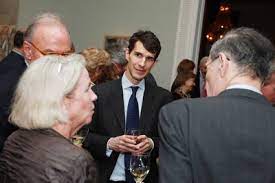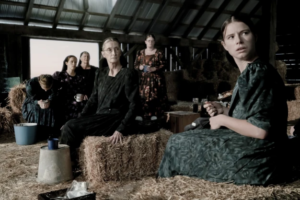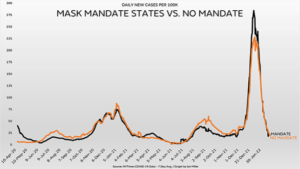What a pleasant day Friday was for me. I had two tickets to see Hugh Eakin speak about Picasso’s War, his fantastic account of how modern art came to America, at the Norton Museum in nearby West Palm Beach. (You can read my review of the book here.)
K was out of town, so I asked M, Number Three Son and fellow art lover, to join me.
I was expecting an elderly, slightly disheveled Oxford-donnish fellow to appear. Instead, Mr. Eakin turned out to be a young-ish, bespectacled nebbish with an appropriately nebbish-y voice.
This is what he looks like:

This is what he sounds like.
It didn’t take me long to fall in love with the man, however. He was smartly funny in a self-effacing way that, for someone that went to both Harvard and Cambridge and has had a spectacular literary career, is both rare and adorable. Moreover, he had clearly done some serious research on his topic. He was able to answer every question thrown at him, including one of mine, with authority, grace, and detail.
Afterwards, I asked M if I could stop by to see Hudson, Number Five Grandson. M and his wife M keep a strict schedule for their one-year-old. The lights in his room are turned off promptly at eight o’clock. So, looking at his watch, M agreed, so long as I understood that there would only be time for me to assist him with Hudson’s bath and bedtime story.
When I got to their home, I realized that I was interrupting a dinner party. I apologized, but M and M assured me I was not intruding, and invited me to stay.
The bath and bedtime story were wonderfully rewarding in every sense that time spent with a one-year-old grandchild could be. Coming downstairs afterwards, I discovered that two of the three dinner guests were friends of M’s that I had known since they were in their early teens. Back then, they were all misfit kids that had found their way to a public but very exclusive high school for the arts (as had M). And now, they were very accomplished professionals with promising lives.
So, I stayed and enjoyed an excellent meal and some excellent Pinot Noir. And I went home feeling very lucky indeed.
 MarkFord
MarkFord












